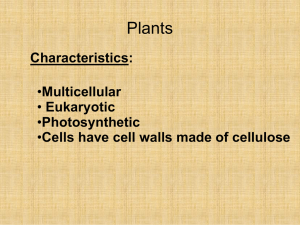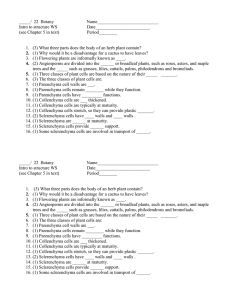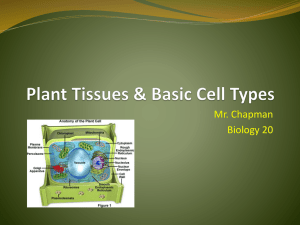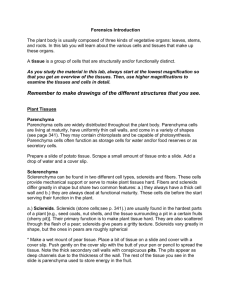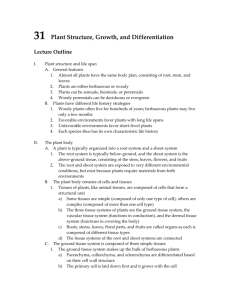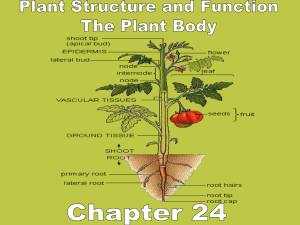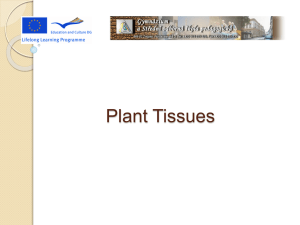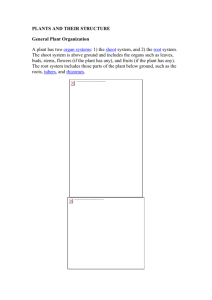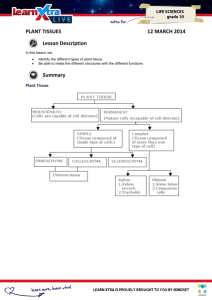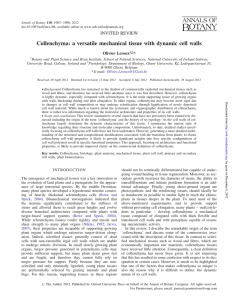Lab 9 - Plant Cell Types
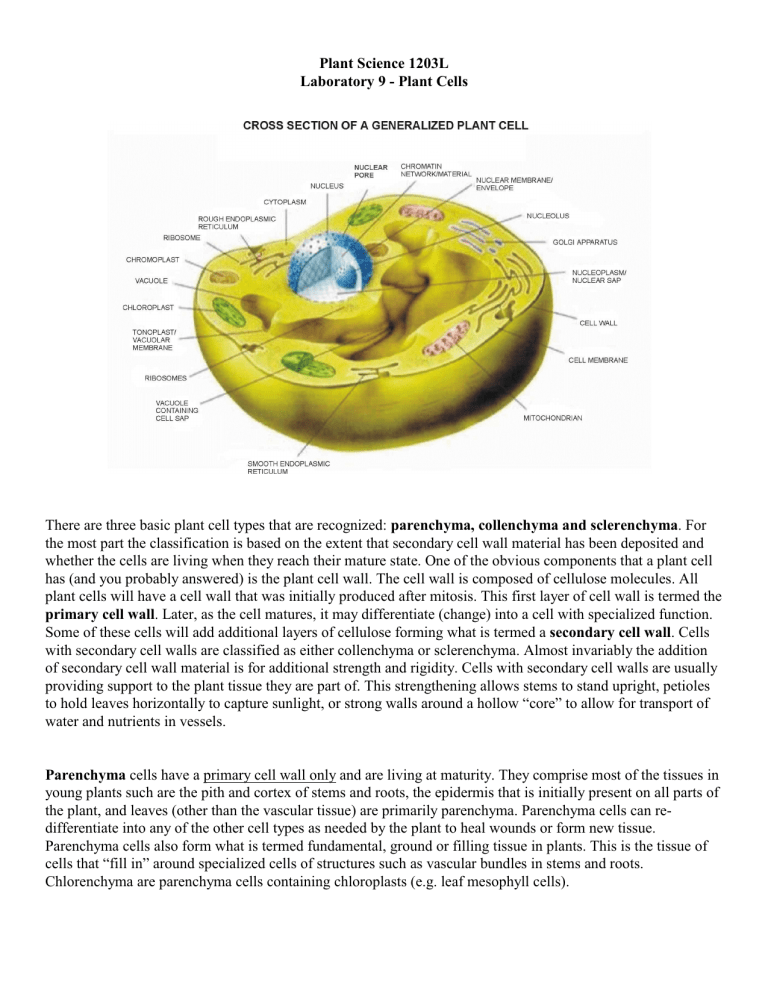
Plant Science 1203L
Laboratory 9 - Plant Cells
There are three basic plant cell types that are recognized: parenchyma, collenchyma and sclerenchyma . For the most part the classification is based on the extent that secondary cell wall material has been deposited and whether the cells are living when they reach their mature state. One of the obvious components that a plant cell has (and you probably answered) is the plant cell wall. The cell wall is composed of cellulose molecules. All plant cells will have a cell wall that was initially produced after mitosis. This first layer of cell wall is termed the primary cell wall . Later, as the cell matures, it may differentiate (change) into a cell with specialized function.
Some of these cells will add additional layers of cellulose forming what is termed a secondary cell wall . Cells with secondary cell walls are classified as either collenchyma or sclerenchyma. Almost invariably the addition of secondary cell wall material is for additional strength and rigidity. Cells with secondary cell walls are usually providing support to the plant tissue they are part of. This strengthening allows stems to stand upright, petioles to hold leaves horizontally to capture sunlight, or strong walls around a hollow “core” to allow for transport of water and nutrients in vessels.
Parenchyma cells have a primary cell wall only and are living at maturity. They comprise most of the tissues in young plants such are the pith and cortex of stems and roots, the epidermis that is initially present on all parts of the plant, and leaves (other than the vascular tissue) are primarily parenchyma. Parenchyma cells can redifferentiate into any of the other cell types as needed by the plant to heal wounds or form new tissue.
Parenchyma cells also form what is termed fundamental, ground or filling tissue in plants. This is the tissue of cells that “fill in” around specialized cells of structures such as vascular bundles in stems and roots.
Chlorenchyma are parenchyma cells containing chloroplasts (e.g. leaf mesophyll cells).
1. Observed parenchyma cells from an epidermal peel of a leaf under the microscope. Observe the thin cell walls and compare to the other demonstration scopes with collenchyma and sclerenchyma cells. You should be able to see a prominent nucleus in some of the cells. Note that there are gaps or lacuna in the second micrograph as pointed too by the arrows.
Collenchyma has secondary cell wall deposits in the corners of the cell. These thickenings provide additional support to the young herbaceous plant stem. All collenchyma is located near the periphery of the stem, never in the center and usually is in “patches” of tissue. In comparison to parenchyma the cells are usually much smaller. Like parenchyma cells these cells are living at maturity.
2. Observe collenchyma cells from a section of a young plant stem under the second microscope. Note that the secondary CW thickenings are primarily in the corners of the cells and not continuous around the cell. This is the basic definition of collenchyma. Additionally, note that collenchyma are generally much smaller than the surrounding parenchyma ground tissue.
extremely thick secondary cell walls such as fibers. Sclereids are sclerenchyma that are usually no more than 3x longer than they are wide. They usually have specialized roles in support (leaf tissue) or protection (hard seed coat or shells of nuts). Others have secondary cell walls that have a variety of shapes such as might be found in vessel members of the xylem tissue. The variety of secondary cell wall shapes varies from helices (spring like) to nearly complete coverage depending on when the vessel was formed.
Sclerenchyma cells usually are highly specialized. Fibers are specialized for support and show this with their extremely thick cell walls and almost no interior space. Fibers in cross section will often look like “doughnuts” and usually are grouped together in bundle or group of fibers.
.
.
3. Observe sclerenchyma fibers in cross section under the microscope. Fibers will appear as a “cap” on top of dicot bundles
4. Observe a maceration of wood. You should be able to find fibers and vessels. Notice that vessels have large interior space and are open on both ends of the cell while fibers are very long, taper to pointed ends and have very thick walls
As you observe some of the vessels you may notice that the cell wall has many perforations or pits. The small circular or oval shaped pits are special gaps in the cell wall for special connections between the cells called plasmodesmata.
Plasmodesmata are connections of endoplasmic reticulum that run between adjacent cells.
This means that plant cells are interconnected to each other by this membrane system that is also tightly associated with the cell nucleus.
Turn In Questions: Name _____________________________
1. Name 4 components that plant cells have, that are DIFFERENT from animal cells.
1)
2)
3)
4)
2. Name 4 components that are COMMON between plant and animal cells.
1)
2)
3)
4)
What is the function or purpose of plasmodesmata?
Identify the cell types of the following micrographs as parenchyma, collenchyma or sclerenchyma. Write your answer under each image.
